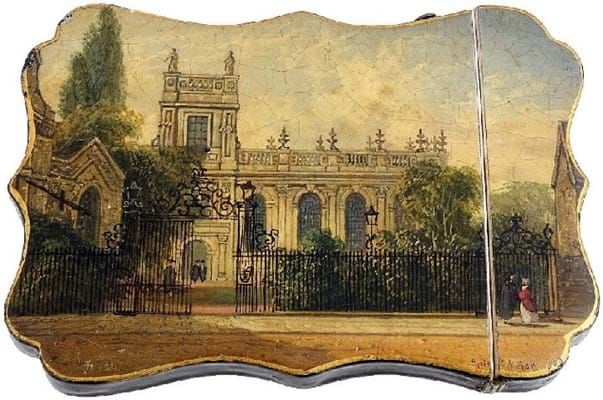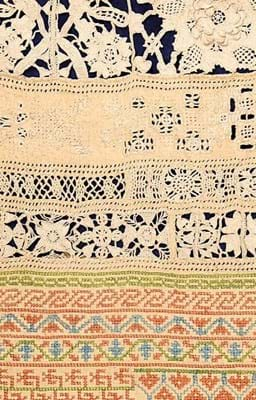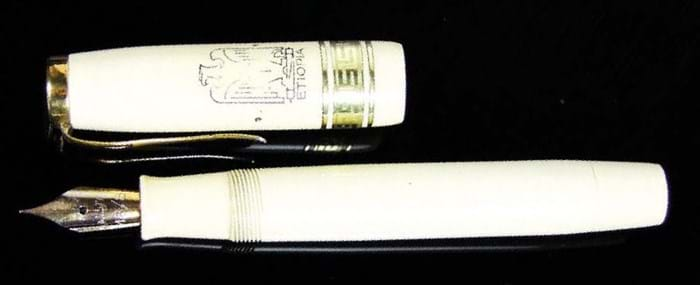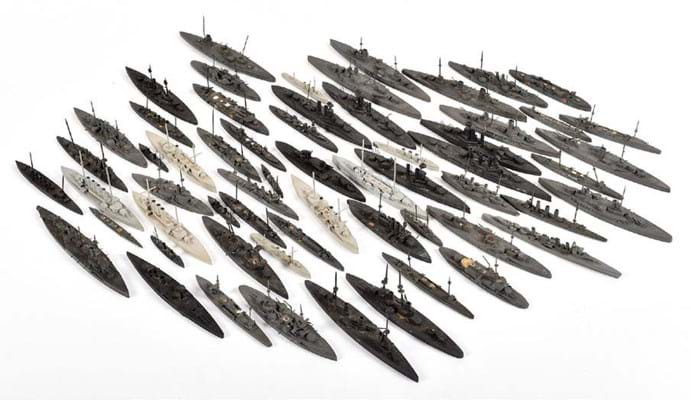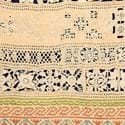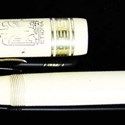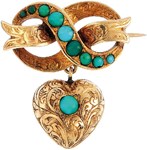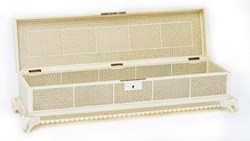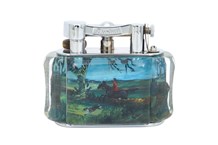In the mid-19th century, a stationery shop in Oxford known as Spiers & Son’s was making a tidy sum trading in papier-mâché card cases.
The store included a workshop where customers could commission their own decoration of family coats of arms and other personal designs to be painted onto plain cases.
By 1851, the shop had employed 30 people. Many of the views were painted by hand and were copied from contemporary engravings and prints of the day.
This Spiers & Son card case, painted with a view of the chapel of Trinity College, Oxford, has been consigned to Dreweatts’ sale in Donnington Priory on November 29.
Estimate £500-800.
dreweatts.com or see this item on thesaleroom.com
Antique textiles owned by an historic Quaker family have been consigned to Tennants’ sale in Leyburn on November 24.
The collection dates from the 17th-19th centuries and was formed by the Stevens family who lived in High Wycombe in London.
The family, who had links with Ackworth, a Quaker school near Pontefract in West Yorkshire, worked in the milling, malt and flour dealing trades before moving into groceries, then building in the 1850s.
Among the earliest items is this linen band sampler dating from the second half of the 17th century, made of intricate needle lace and bands of silk embroidery.
Estimate £1000-1500.
tennants.co.uk or see this item on thesaleroom.com
Coinciding with Italy’s invasion of Abyssinia in 1935, the Italian fountain pen firm, Aurora, produced a special pen for Italian servicemen abroad.
Called Etiopia, it was made from a white celluloid and had an engraving of an imperial Roman eagle on the cap. The pen was made as an eyedropper – taking its name from the way you fill the barrel of the pen – and came with dried ink granules which could be mixed with water to produce the necessary writing ink.
Auction house George Kidner will feature a c.1936 Etiopia pen in its sale on November 23 in Lymington, Hampshire, estimated at £600-800.
Today, the name Bassett-Lowke is mainly connected with detailed model trains, but the company also had a long history making scale military and civilian ‘waterline’ ship models.
First created in 1908, these models showed only the parts above the waterline, and became increasingly sought-after during the First World War.
The models were formed in lead with the wire masts cast into the hulls, and were painted and issued in numbered boxed sets. The 1917 Bassett-Lowke catalogue makes the claim that “practically every ship in the Navy has been modelled”, from super-dreadnoughts, battleships and battle cruisers to destroyers, submarines and minesweepers.
A collection of these Bassett-Lowke hand-made waterline ships will feature in Dawson’s auction in Maidenhead on November 25. Estimate £1000-1500.
dawsonsauctions.co.uk or see this item on thesaleroom.com


